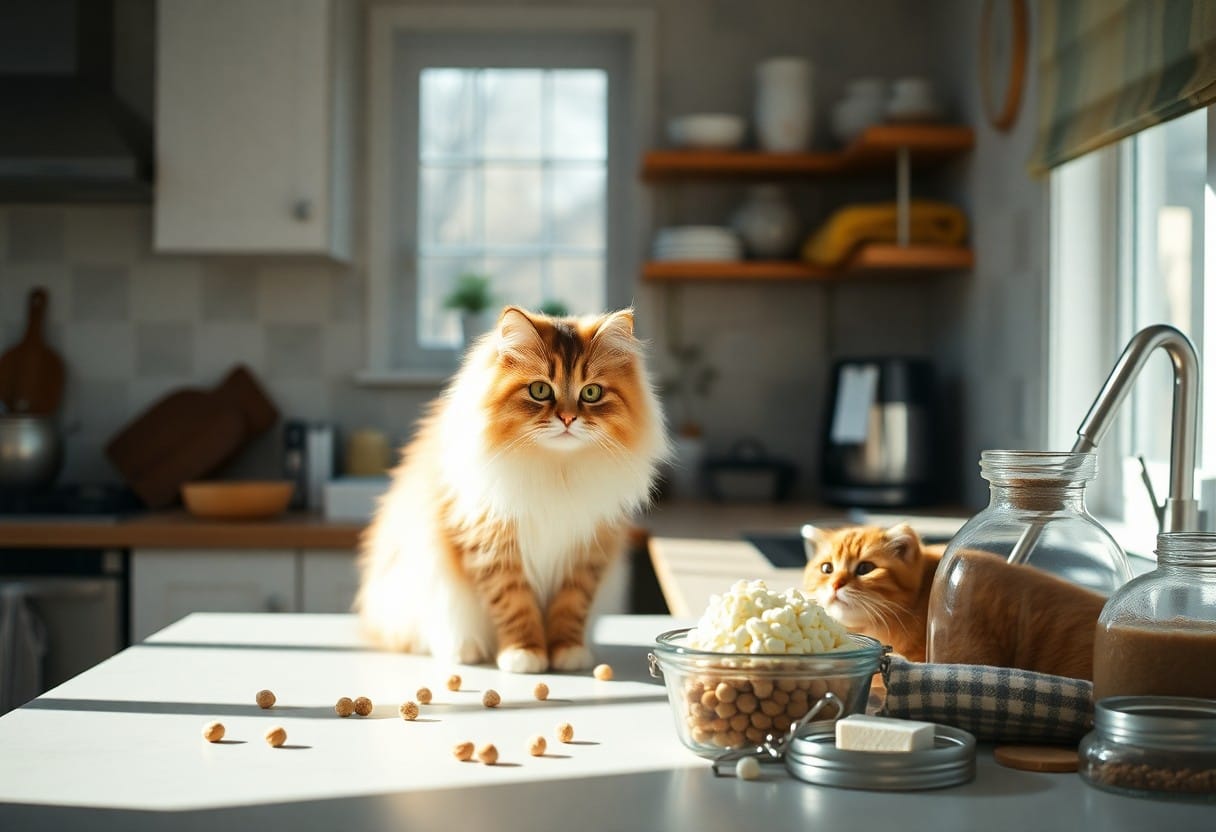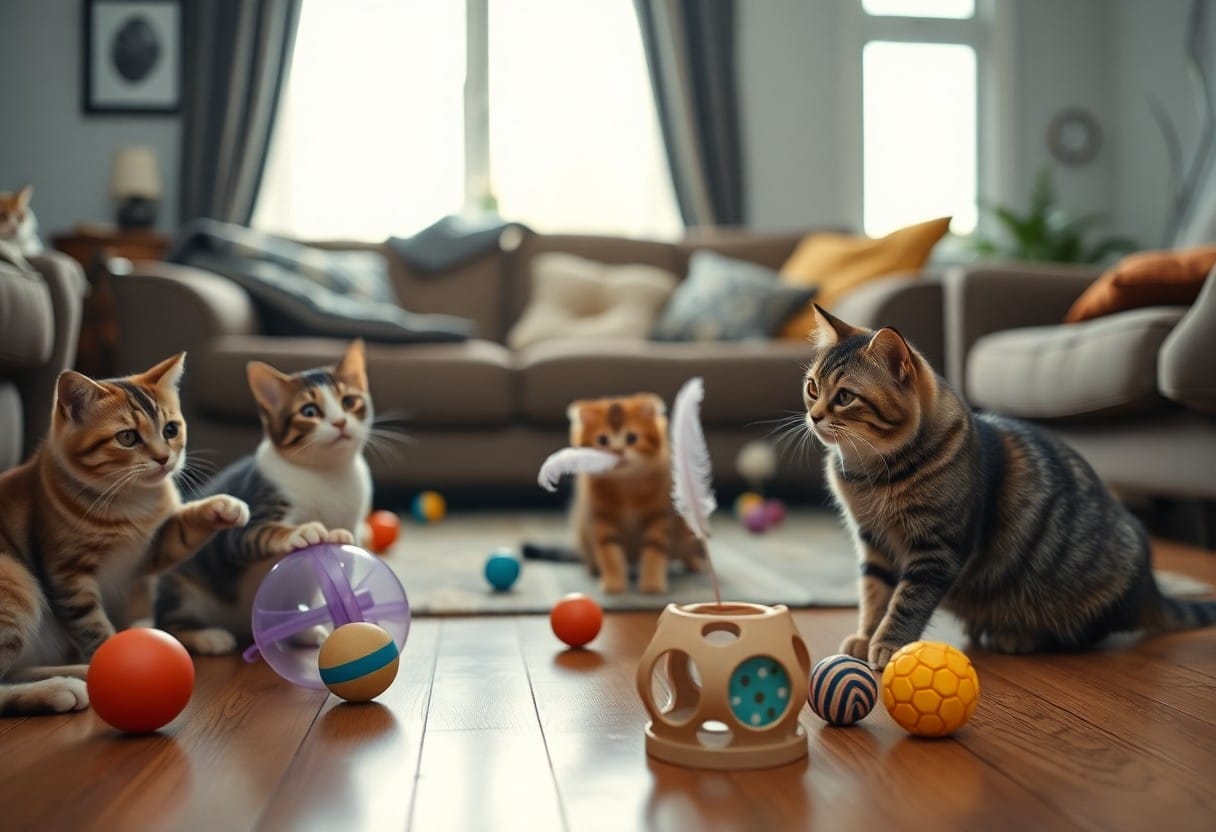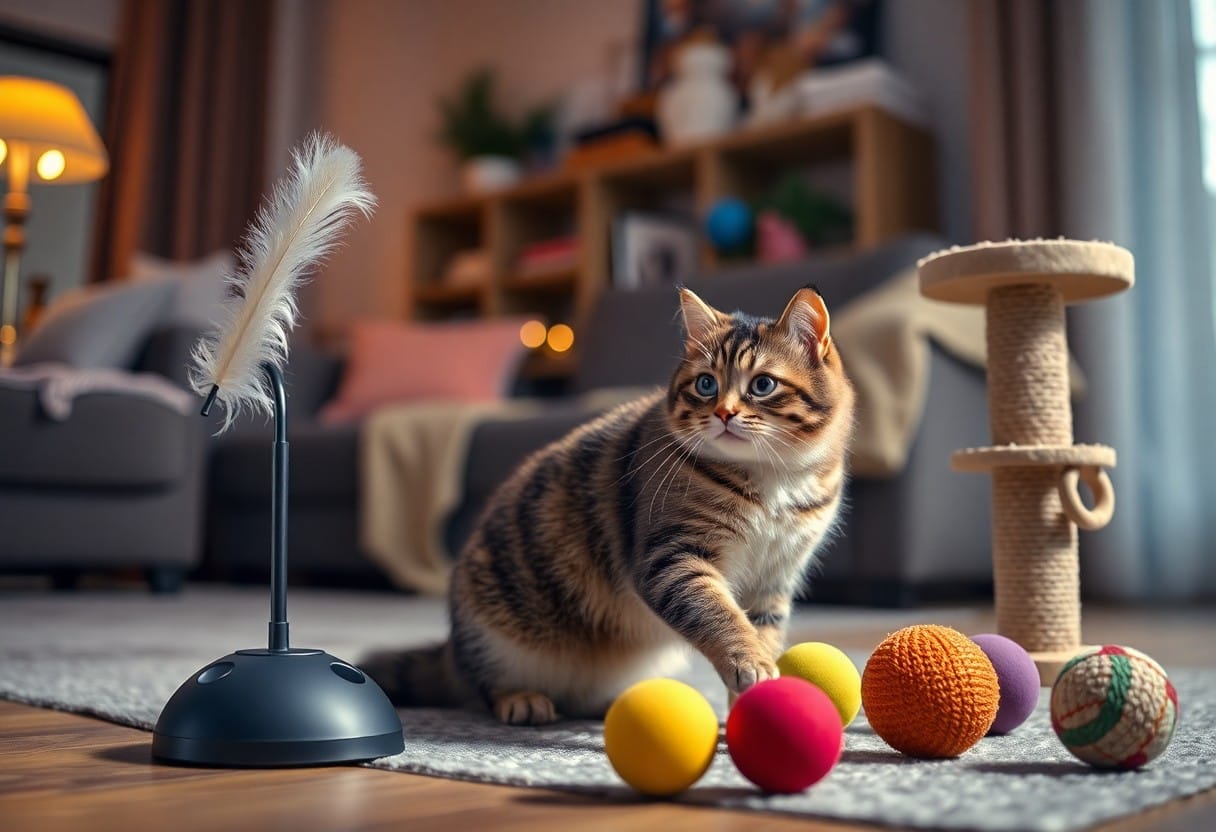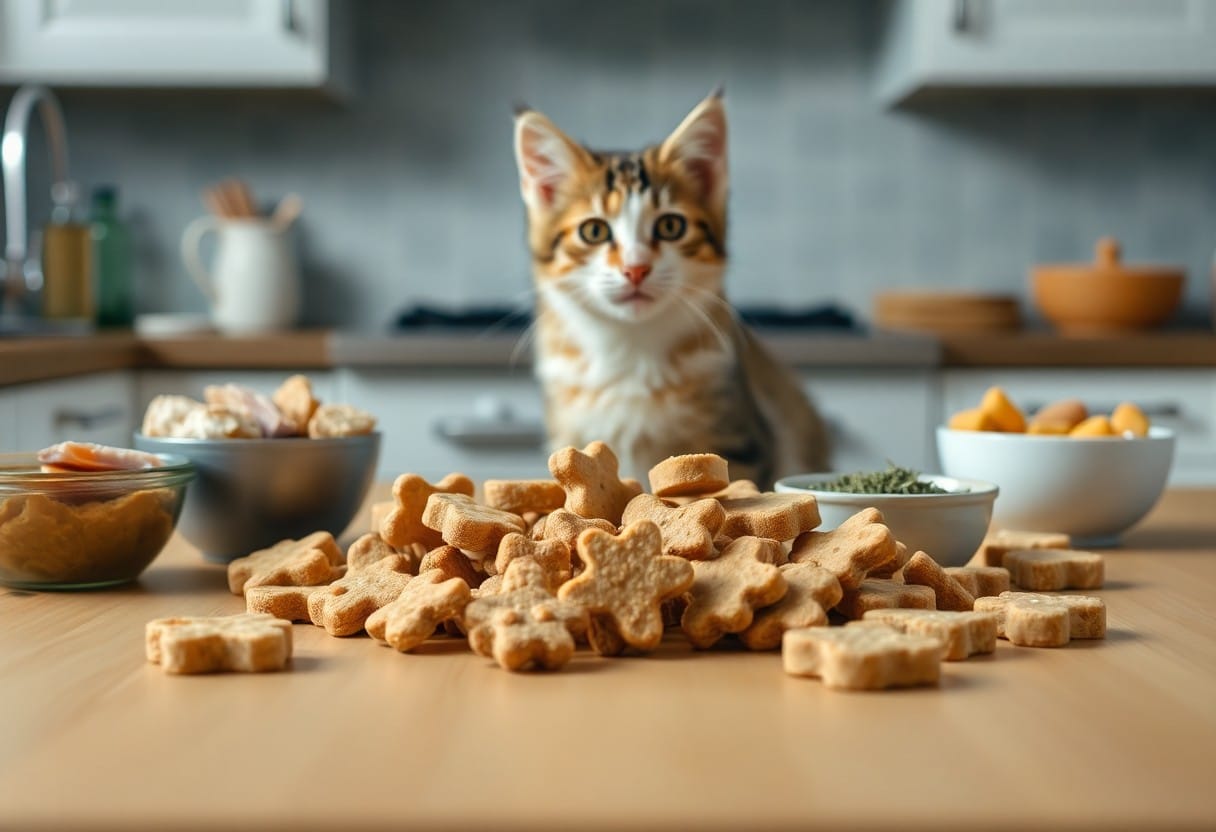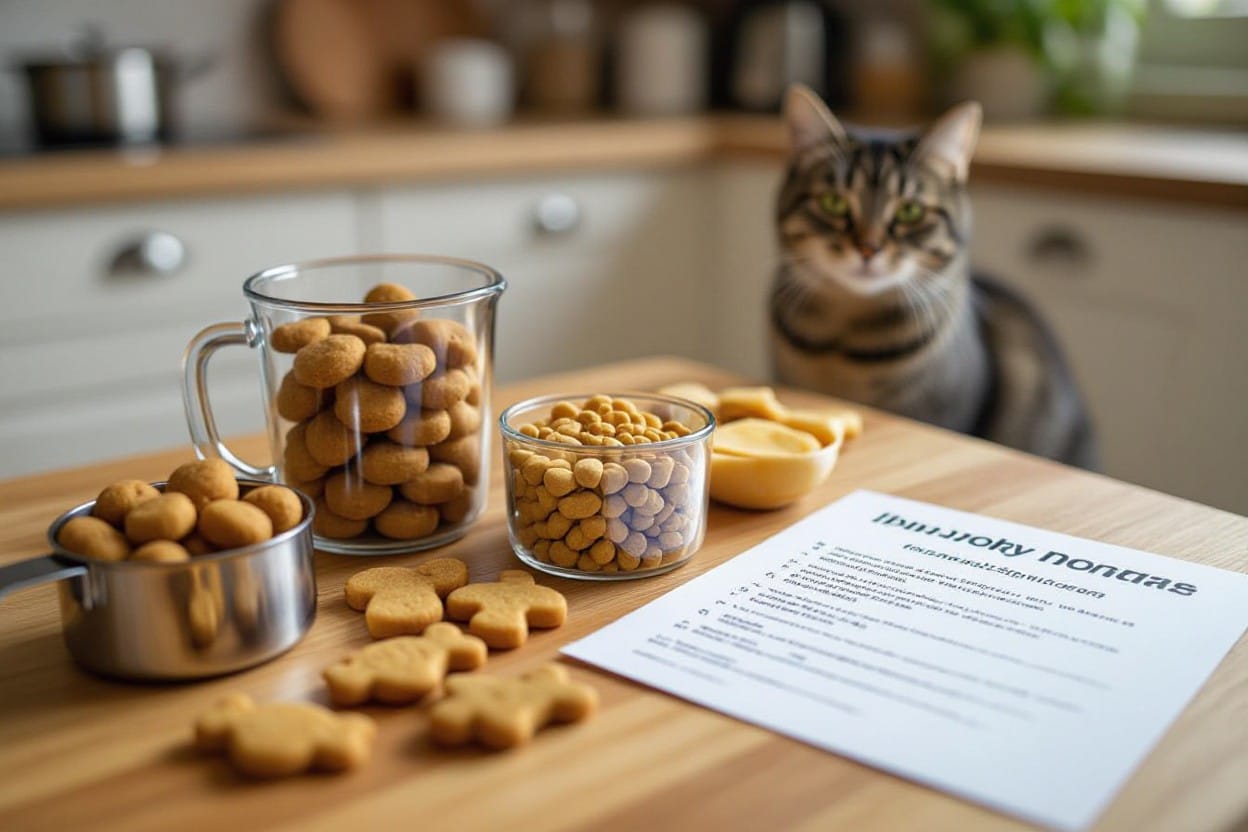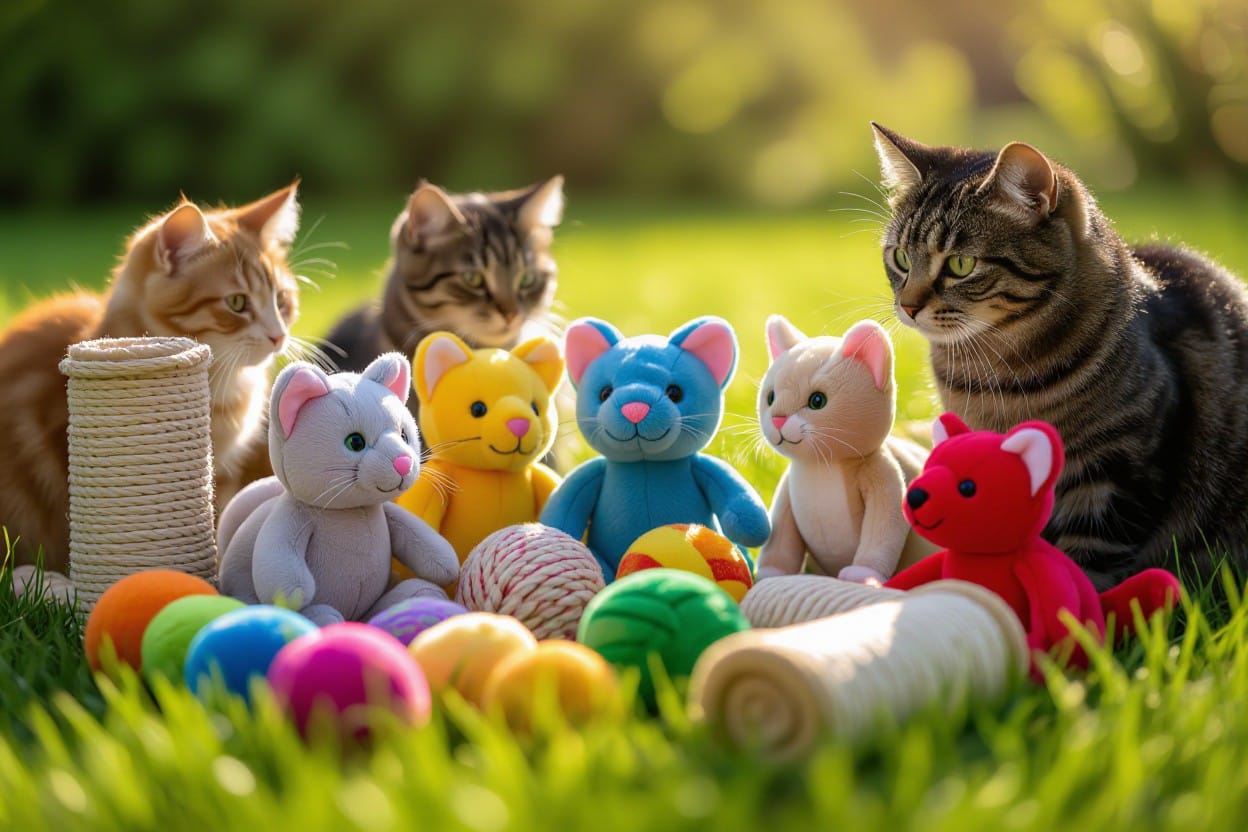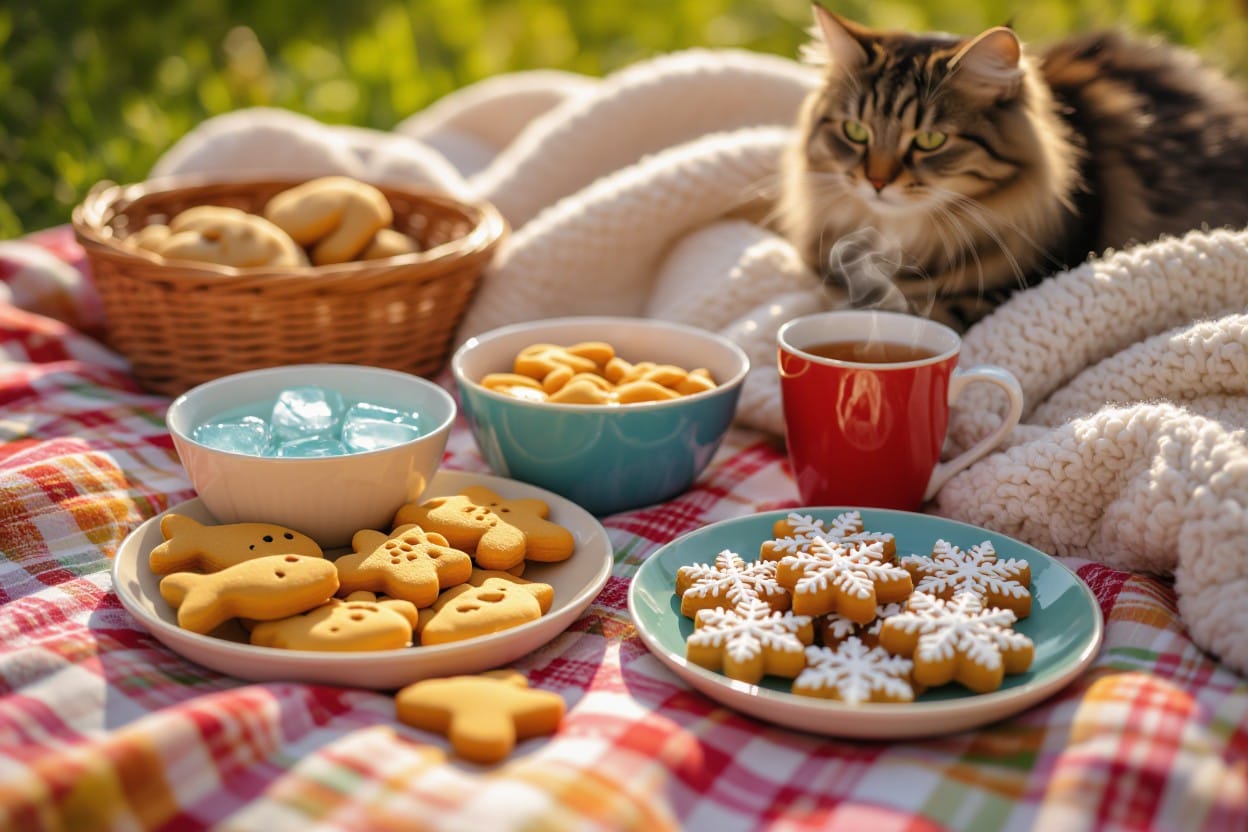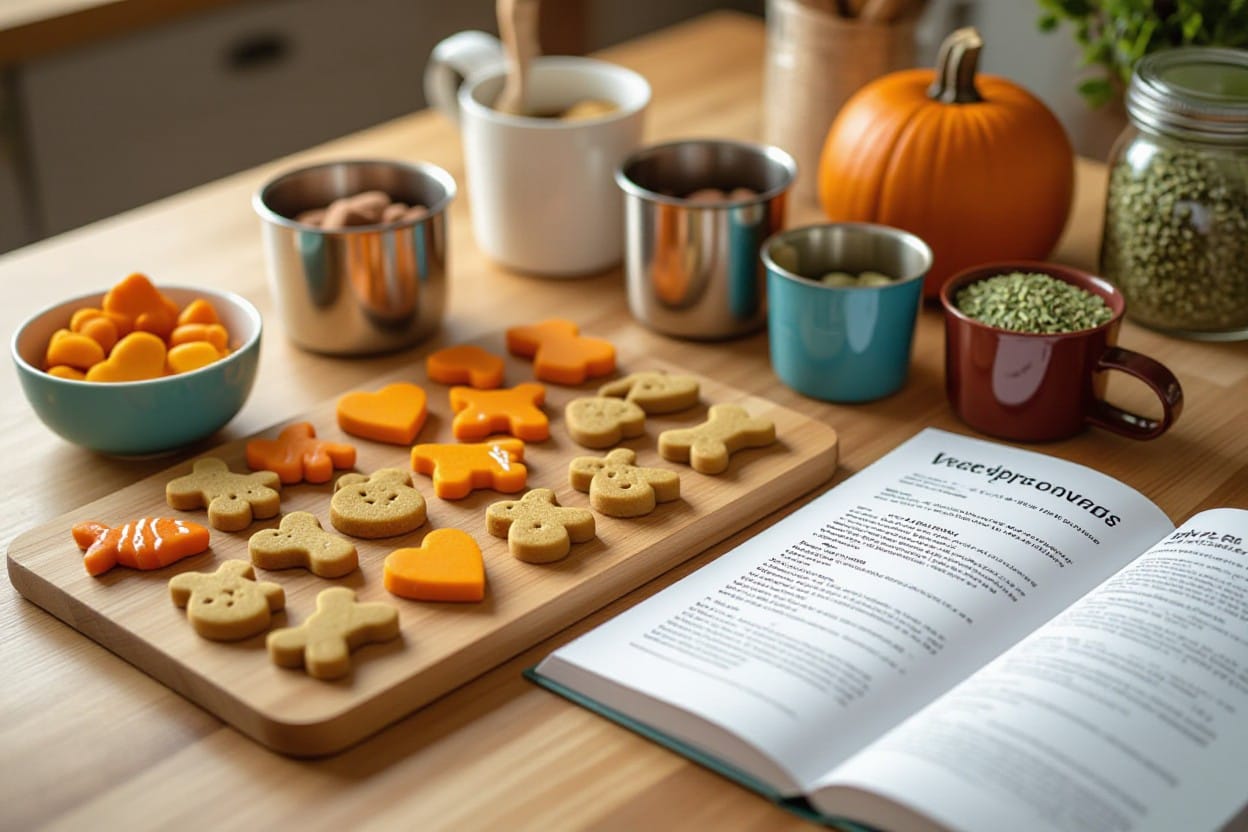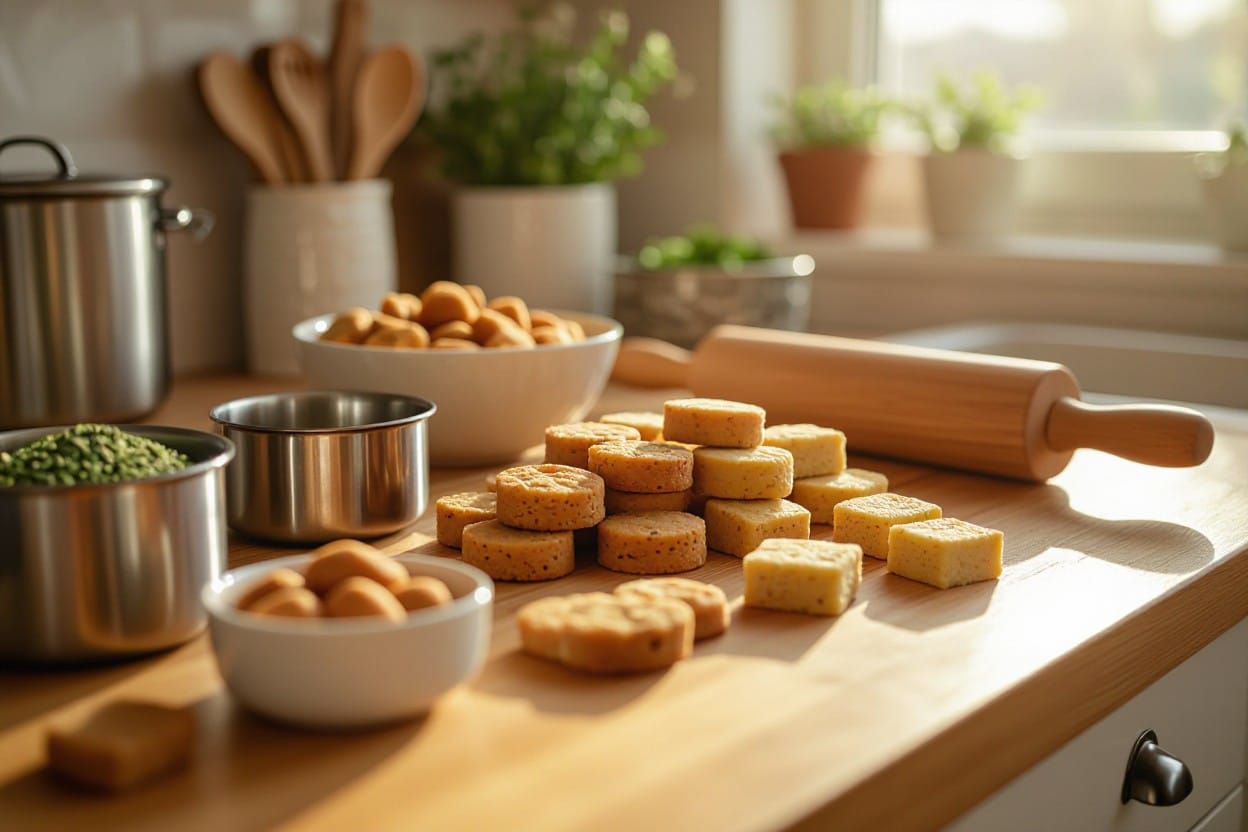Cats are not just pets; they are beloved companions that thrive on love and interaction. One of the best ways to strengthen your bond with your furry friend is by creating homemade treats that cater to their unique tastes. Not only will this activity allow you to utilize safe ingredients for your cat’s diet, but it will also provide you with an opportunity to engage with them in a meaningful way. Join us as we explore the joy of making memories through delectable homemade cat treats!
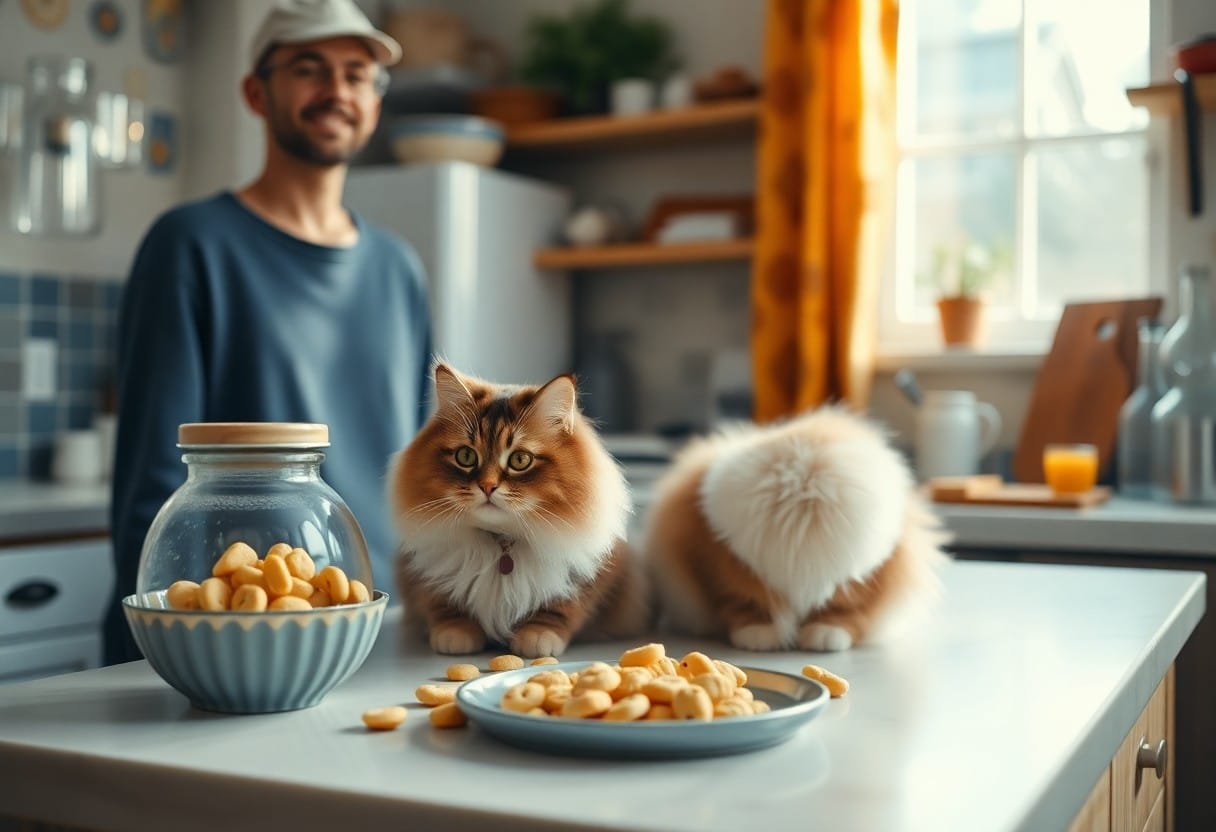
Key Takeaways:
- Creating homemade treats for your cat can strengthen your bond and enhance their overall wellbeing.
- Engaging in the cooking process together can be a fun and interactive experience for both you and your feline friend.
- Using healthy, cat-friendly ingredients allows you to control the nutritional value of the treats while catering to your cat’s preferences.

The Importance of Bonding with Your Cat
For a fulfilling and joyful life with your cat, bonding is crucial. Strengthening your connection fosters mutual trust and affection, leading to a more harmonious living environment. By engaging in shared activities, such as making homemade treats, you not only create delightful experiences but also enhance your understanding of your cat’s personality and needs.
Understanding Cat Behavior
Between their playful antics and moments of solitude, cats communicate through their body language and vocalizations. By paying attention to these signals, you can gain insights into their emotions and preferences. This understanding lays the groundwork for a deeper relationship, allowing you to respond to their needs more effectively.
Benefits of Strengthening Your Relationship
Above all, a strong bond with your cat leads to improved behavioral outcomes. You will foster a sense of safety and security in your pet, resulting in less anxiety and more confidence. Engaging in treat-making together can also stimulate your cat’s mental faculties, making them happier and more adaptable.
Consequently, the benefits of strengthening your relationship with your cat are profound. A secure bond leads to reduced stress for both you and your cat, lowering the likelihood of behavioral issues such as aggression or withdrawal. Additionally, the shared experience of creating homemade treats fosters joyful interactions, enhancing your cat’s well-being. The more time you spend together, the deeper your understanding becomes, ultimately transforming your pet into a confident, loving companion.
Choosing the Right Ingredients for Homemade Treats
Some pet owners may rush into selecting ingredients for their cat’s treats, but taking the time to choose the right ones can make a significant difference. Opting for fresh, natural ingredients not only enhances the flavor but also nurtures your cat’s well-being. Key ingredients include protein sources such as chicken or fish, and, if your cat tolerates it, a bit of whole grains or vegetables can add nutritional value. By understanding what works best for your feline friend, you’ll create tasty and wholesome treats that strengthen your bond.
Safe and Healthy Options
Against popular belief, not all human food is safe for cats. Focus on using ingredients that provide health benefits while being safe for your feline companion. Proteins like cooked chicken, turkey, or fish and fresh vegetables such as carrots or peas can be great additions. Always ensure any ingredient is suitable for your cat, as some may have allergies or sensitivities. It’s a great way to ensure your treats are both enjoyable and nourishing.
Ingredients to Avoid
Choosing the right ingredients for your cat’s treats extends to understanding what to avoid as well. Certain foods can pose serious health risks to your feline companion. Among these ingredients are onions, garlic, chocolate, and grapes, which can be toxic even in small amounts. Additionally, avoid using artificial sweeteners like xylitol, as these can lead to severe reactions. By steering clear of these harmful ingredients, you can ensure that the treats you make are safe and enjoyable for your cat.
Healthy treats contribute to your cat’s overall happiness and vitality. Avoiding ingredients like sugar, salt, or unhealthy fats helps to prevent obesity and related health issues. It’s vital to keep in mind that even common house ingredients can be dangerous. Always double-check labels and do your research on any new ingredients before using them. Providing your cat with safe and delicious treats not only fosters a healthy lifestyle but also guarantees your furry friend stays happy!
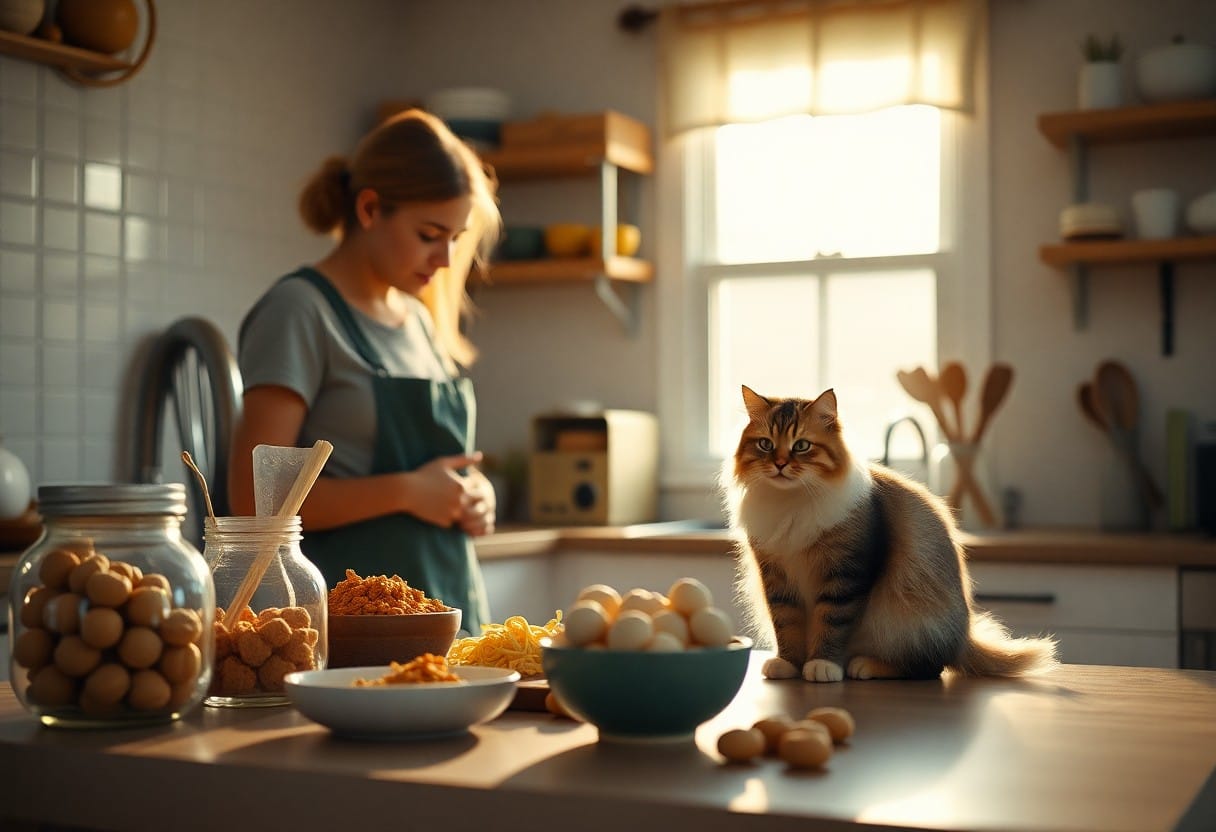
Simple Homemade Treat Recipes
After spending quality time with your cat, you can easily bond further by preparing some simple homemade treats. These recipes not only cater to your feline’s taste buds, but also allow you to engage creatively in the kitchen. You’ll notice how much your cat enjoys these special snacks while strengthening the bond you share. Get ready to whip up some delightful goodies!
Treat Recipe 1: Chicken Bites
To create these scrumptious chicken bites, you’ll need just a few ingredients: cooked chicken, oat flour, and a touch of vegetable broth. Simply blend the chicken and combine it with the flour and broth to form a dough. Cut them into bite-sized pieces and bake until golden. Your cat will love the aroma as much as the taste!
Treat Recipe 2: Fishy Delights
Treat your cat to these fishy delights made with canned tuna in water, oat flour, and a little egg. Mix until smooth, shape into small balls, and bake until firm. Not only will your kitty adore these treats, but the omega-3 fatty acids in fish are also beneficial for their coat and health.
Delights like these aren’t just tasty; they promote overall health for your feline friend! The omega-3 fatty acids have anti-inflammatory properties that can help with joint health, while the protein content will keep your cat full and satisfied. Just make sure to use tuna packed in water, avoiding any added salt or preservatives to keep it healthy.
Treat Recipe 3: Catnip Cookies
For a fun twist, your cat will love these catnip cookies made with a mix of oat flour, catnip, and a little egg. Combine ingredients into a dough, roll out, and cut into desired shapes before baking. The aroma will surely make your feline friend purr with excitement!
Simple and flavorful, these catnip cookies are perfect for special occasions or everyday treats. The addition of catnip allows for mental stimulation and can lead to some playful antics, making them an ideal way to bond with your cat. Watch your pet enjoy the delights of these treats, all while ensuring they are safe and nutritious!
Engaging Your Cat in the Treat-Making Process
To make the treat-making experience more enjoyable, get your cat involved in every step. Allow your feline friend to sniff the ingredients and watch your actions closely. This interaction not only entertains your cat but also fosters a deeper connection between the two of you as you bond through the process.
Making It a Fun Activity
Any time spent preparing treats can easily become an engaging game for your cat. Incorporate playful elements like allowing them to ‘help’ by supervising the mixing or rolling of dough. Use a few safe ingredients to create an enticing aroma and get your cat excited and eager to taste the final product!
Training Tips While Cooking
Any cooking session can double as an opportunity for training your cat. Use this time to reinforce commands and good behavior while you prepare their treats. Consider these tips to enhance your cooking experience:
- Utilize a command such as “sit” before offering treats.
- Incorporate positive reinforcement to build good habits.
- Keep your workspace safe by ensuring hazardous items are out of reach.
Thou shalt create a pleasurable environment that leads to delicious outcomes and better behavior from your furry friend!
Another vital aspect of this training is keeping an eye on your cat’s reactions during the process. Encourage their inquisitive nature while ensuring that your cooking area remains cat-friendly. Introduce simple commands to reinforce their learning, such as “stay” or “watch.” Doing so can help your cat feel more involved and attentive as you cook, making the experience all the more rewarding. Thou shalt find that this combination of learning and fun enhances their behavior and makes treat time even more special!
Tips for Storing and Serving Treats
Once again, ensuring your homemade cat treats stay fresh and enjoyable is imperative for making the most of your bonding experience. Here are some tips for storing and serving:
- Keep treats in a sealed container to maintain freshness.
- Label and date your treats for easy identification.
- Store treats in a cool, dry place away from sunlight.
- Serve treats in moderation to avoid dietary issues.
Recognizing the importance of proper storage and serving will enhance your cat’s treat experience.
Proper Storage Techniques
Behind the scenes, storing your cat’s homemade treats properly can prolong their shelf life and keep them safe. Use air-tight containers, such as glass jars or plastic bins, to protect your treats from moisture and air exposure. If you’ve made a large batch, consider using the freezer for long-term storage, ensuring you portion out individual servings for convenience. Additionally, maintain a clean storage environment by regularly checking for any signs of spoilage or contamination.
Serving Suggestions for Treat Time
After you have prepared your homemade treats, it’s time to serve them to your beloved feline! Present the treats in a designated spot where your cat feels comfortable, such as their favorite mat or cozy corner. You might also try using interactive treat-dispensing toys to make treat time more engaging for your cat. This not only stimulates their mind but also promotes physical activity. You can even mix homemade treats with their regular food for a delightful surprise!
In fact, serving treats in a playful manner can greatly enhance your cat’s experience. Options like hiding treats around the house or mixing them into interactive puzzles are excellent ways to stimulate your cat’s natural hunting instincts. Always be cautious about portion sizes, as overindulging can lead to health issues. It’s vital to consider your cat’s dietary needs and avoid harmful ingredients. By being thoughtful in your serving methods, you can create positive moments that strengthen your bond with your furry friend.
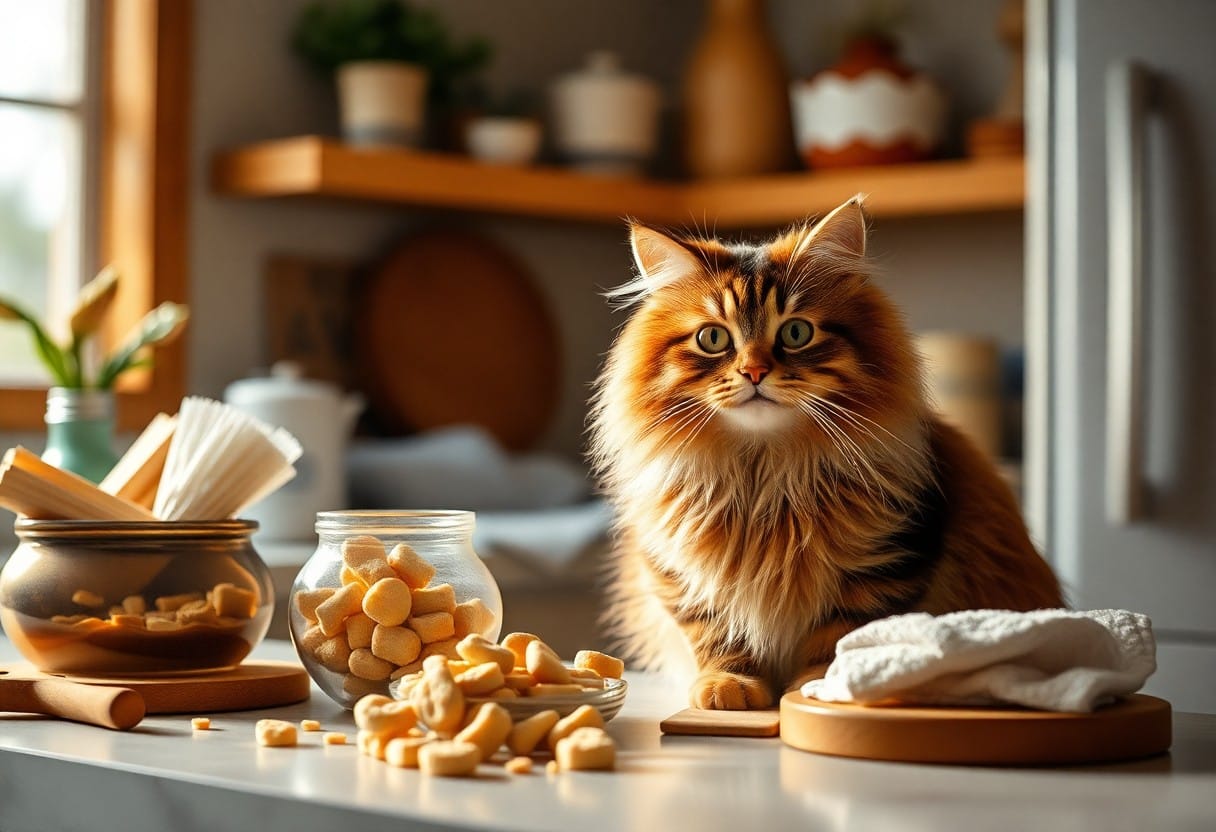
Monitoring Your Cat’s Reaction to New Treats
Your cat’s reaction to new treats can provide valuable insight into what they enjoy and what may not agree with them. By observing their behavior, you can ensure that the treats you are making are both enjoyable and suitable for their dietary needs. It’s important to introduce new flavors gradually and keep an eye on any changes in their habits or health. If you notice any adverse reactions, you may need to adjust or discontinue the treat recipe.
Signs of Enjoyment
Monitoring your cat’s body language and behavior after introducing new treats can help gauge their enjoyment. Look for signs such as excitement, purring, or even a playful demeanor. Your feline may also exhibit a strong interest in the treat, approaching eagerly, or meowing for more. Positive reactions typically indicate that your homemade treat has been a success!
Addressing Any Dietary Issues
Issues like allergies or sensitivities can arise when introducing new treats, making it imperative to monitor your cat closely. If you notice any gastrointestinal disturbances, including vomiting or diarrhea, it’s a sign you may need to re-evaluate the ingredients used.
Indeed, food allergies in cats often manifest through symptoms like itching, swelling, or digestive upset, so it’s important to consult with your veterinarian if any of these issues arise. Common allergens include dairy, wheat, and certain proteins; thus, you should avoid these if your cat has shown previous sensitivities. Additionally, keep an eye on your cat’s overall health after introducing new treats, as maintaining a balanced diet is imperative for their well-being. Always consult with your vet for tailored advice to ensure any homemade treats are beneficial.
Final Words
Upon reflecting on the joys of making homemade treats for your cat, you realize that this simple activity fosters a stronger bond between you and your furry friend. By engaging in this nutritious and fun practice, you create lasting memories while ensuring your cat enjoys healthy snacks. Your shared experiences in the kitchen enrich your relationship, promoting trust and love, and you may even discover new flavors your cat adores. So, gather your ingredients and start crafting delightful treats; it’s a rewarding journey for both of you.
FAQ
Q: What ingredients should I use for making homemade cat treats?
A: When making homemade cat treats, it’s necessary to choose ingredients that are safe and appealing to your feline friend. Common ingredients include cooked chicken, tuna, or salmon as a protein base. You can mix these with other options like pumpkin, peanut butter (ensure it’s xylitol-free), and catnip for added flavor. Whole wheat flour or oats can be used as a binding agent. Always avoid harmful ingredients such as onions, garlic, or chocolate, and consult your veterinarian if you’re unsure about specific items.
Q: How can I involve my cat in the treat-making process?
A: Engaging your cat during treat-making can enhance your bond. While your cat may not be able to participate actively, you can make it interactive by letting them observe and smell the ingredients as you work. Additionally, you can incorporate catnip into the process, allowing them to enjoy the aroma while you prepare the treats. Once the treats are baked, you can use them for clicking training to create a fun and rewarding experience, reinforcing positive behavior while feeding them something delicious.
Q: How should I store the homemade cat treats, and how long do they last?
A: Proper storage is key to maintaining the freshness of your homemade cat treats. Once the treats have cooled completely, store them in an airtight container at room temperature, where they can last about a week. For extended shelf life, you can refrigerate them for up to two weeks. If you plan to make a larger batch, consider freezing the treats, where they can be kept for up to three months. Simply thaw them before offering them to your cat, ensuring they are safe and tasty!
